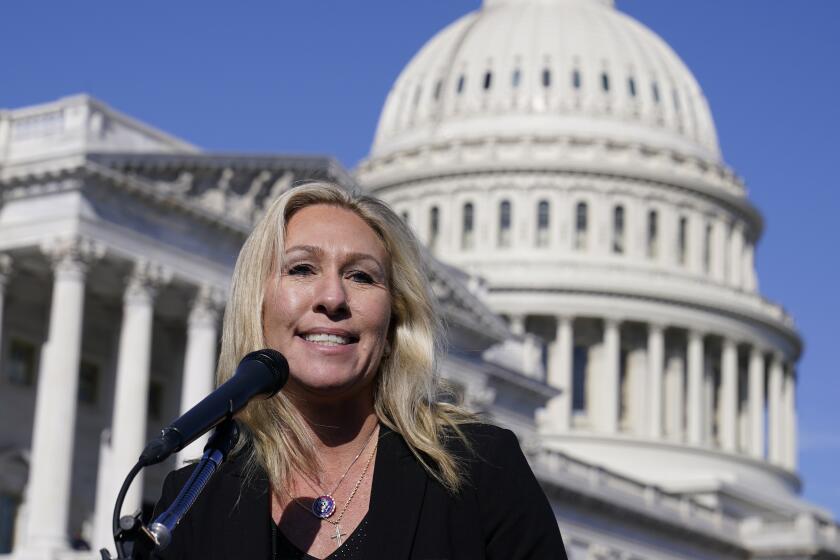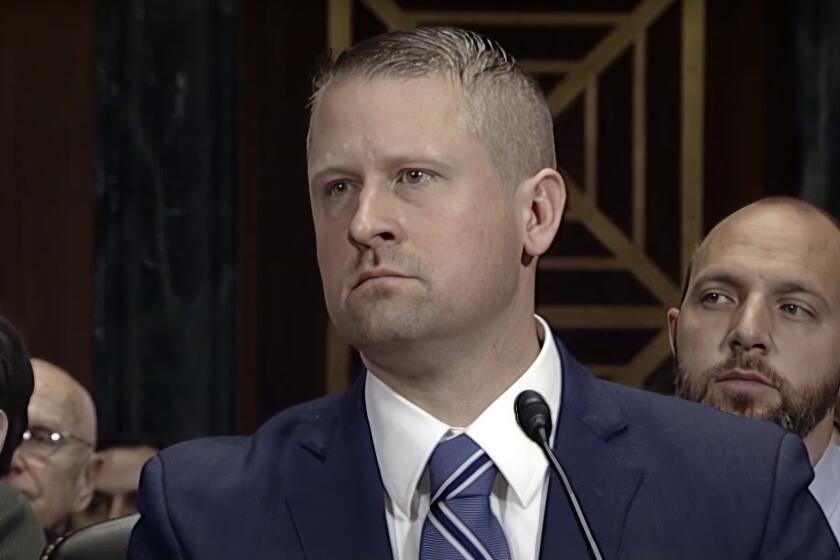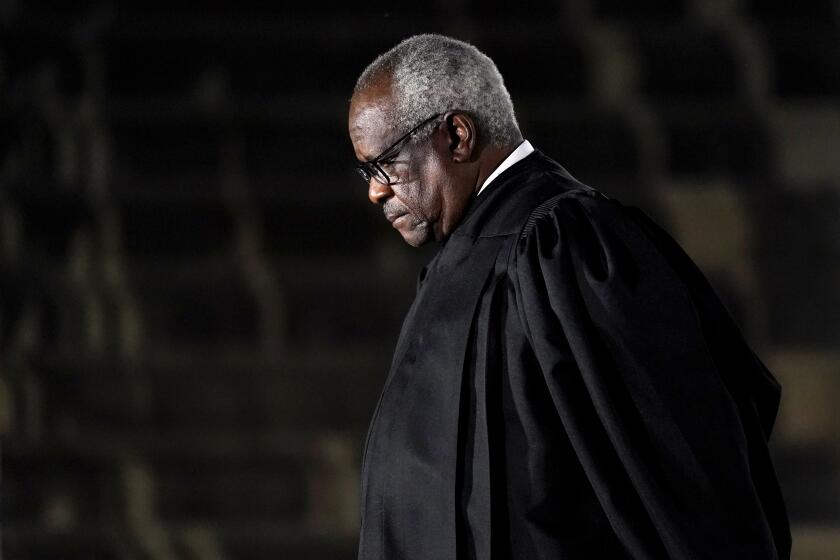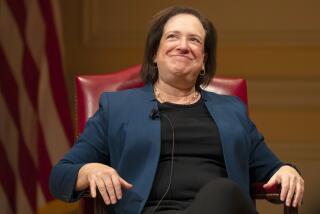Column: With its ‘Chevron’ ruling, the Supreme Court claims to be smarter than scientific experts
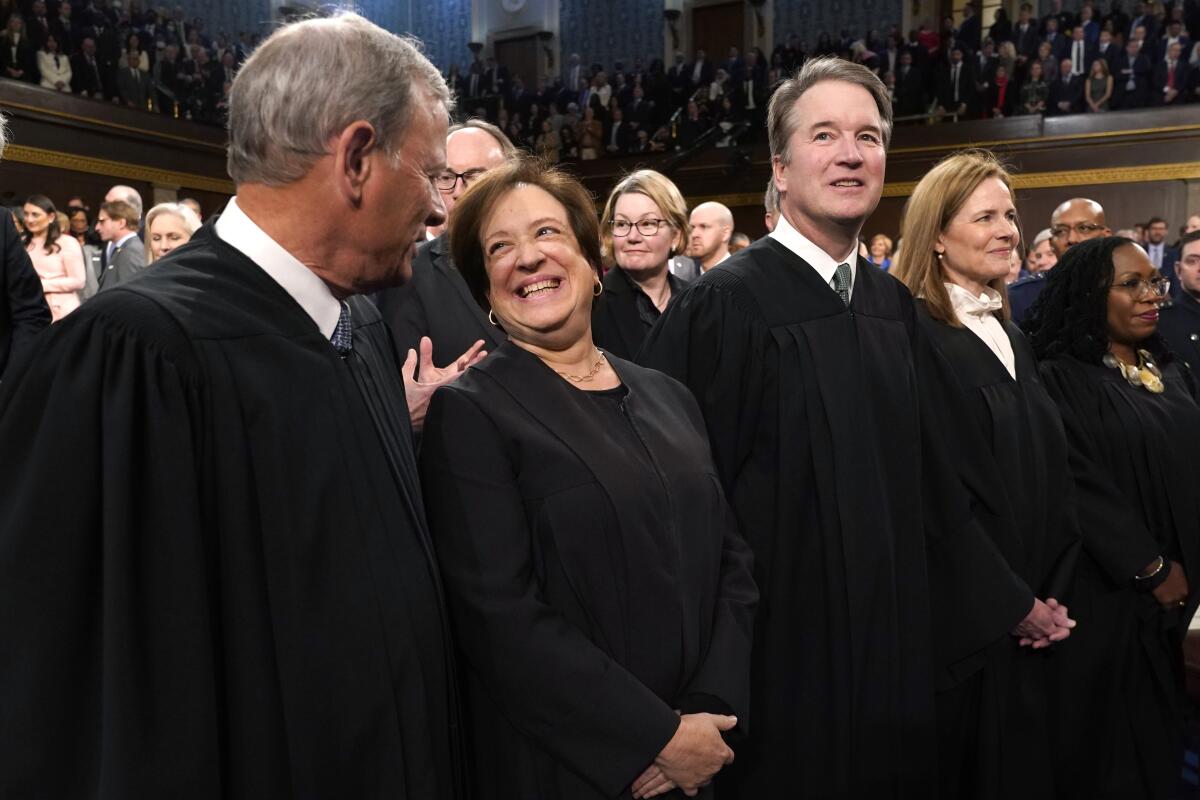
Second only to the Supreme Court’s ruling Monday on when presidents are immune from criminal prosecution, the biggest case of the court’s recently completed session involved the age-old conflict between judges and government regulators.
The case concerned a 40-year-old precedent known as “Chevron deference.” That doctrine held that when a federal law is ambiguous, the courts must defer to the interpretations offered by the agencies the law covers — as long as those interpretations are “reasonable.” On Monday, the court discarded Chevron deference.
This may sound like an abstruse legalistic squabble, but it has massive implications for Americans in all walks of life. It could subject agency decisions on scientifically based issues such as clean air and water regulations and healthcare standards to endless nitpicking by a federal judiciary that already has displayed an alarming willingness to dismiss scientific expertise out of hand, in favor of partisan or religious ideologies.
In one fell swoop, the majority today gives itself exclusive power over every open issue—no matter how expertise-driven or policy-laden.
— Supreme Court Justice Elena Kagan
The ruling amounts to an apogee of arrogance on the part of the Supreme Court’s conservative majority, wrote Justice Elena Kagan in a dissent joined by Justices Sonia Sotomayor and Ketanji Brown Jackson. But it’s not a new development.
“The Court has substituted its own judgment on workplace health for that of the Occupational Safety and Health Administration,” Kagan wrote; “its own judgment on climate change for that of the Environmental Protection Agency; and its own judgment on student loans for that of the Department of Education.... In one fell swoop, the majority today gives itself exclusive power over every open issue — no matter how expertise-driven or policy-laden.”
Get the latest from Michael Hiltzik
Commentary on economics and more from a Pulitzer Prize winner.
You may occasionally receive promotional content from the Los Angeles Times.
Chevron deference originated in 1984, when environmentalists were fighting an effort by the EPA under Ronald Reagan to loosen clean air rules at the behest of industrial polluters. As it happens, the environmentalists lost that battle, but over time they won the war against deregulation.
Conservatives have had it in for the Chevron doctrine
for a long time; given their current majority on the court, the doctrine’s death has been a foregone conclusion, awaiting only the appearance of a suitable case to use as a bludgeon. Indeed, the majority was so impatient to kill the doctrine that the court’s six conservatives chose to do so by using a case that actually is moot.
That case arose from a lawsuit brought by the herring industry, which objected to a government policy requiring herring boats to pay for government observers placed on board to make sure the boats were complying with their harvesting permits.
Republicans criticizing Biden’s student debt relief plan took millions of dollars in pandemic relief loans and never paid them back. But they say that’s different.
The rule was imposed under the Trump administration, but it was canceled in April 2023 by Biden, who repaid the money that had been taken from the boat owners — so there’s nothing left in it for the court to rule on.
Interestingly, Chevron deference was not always seen as a bulwark protecting progressive regulatory policies from right-wing judges, as it’s viewed today. At its inception, it was seen in exactly the opposite way — as giving conservative policies protection from progressive-minded judges.
The Natural Resources Defense Council, which brought the original case in an effort to preserve Clean Air Act regulations that were being overturned by the Reagan administration, counted the 1984 ruling as a severe loss.
At issue then was the definition of a pollution “source.” Past practice defined it as a single building or smokestack; the administration wanted to redefine “source” broadly, as referring to an entire pollution-emitting plant. This wasn’t a trivial difference. The NRDC’s interpretation was more stringent than the government’s, for the latter allowed a polluter essentially to hide law-breaking emissions within an otherwise non-polluting plant.
The original Chevron ruling was 6 to 0 (three justices didn’t participate — two because of illness and the third, Sandra Day O’Connor, recused herself because of a conflict of interest). The ruling stated that when a federal law was ambiguous or silent on a particular issue, judges were bound to defer to the interpretation offered by the agency covered by the law, as long as its interpretation was “reasonable.”
One other thing: The functionary pushing to give industry more freedom to pollute was Reagan’s Environmental Protection Agency administrator, the late Anne Gorsuch. Name sound familiar? Justice Neil M. Gorsuch, who is her son, lined up with the anti-Chevron majority. Curiously, he didn’t mention his family history in his separate concurrence — or perhaps not so curiously, because his mother was on the winning side of the decision that he has now voted to overturn.
In any event, Gorsuch’s words about the case in which his mother triumphed were telling. “Today,” he concluded gleefully, “the Court places a tombstone on Chevron no one can miss.”
Conservatives have won big legal victories by choosing right-wing judges, but the federal court system has finally gotten fed up.
The truth is that the Chevron ruling of 1984 and Monday’s ruling both served a goal shared by Anne Gorsuch and her offspring: providing federal judges all the leeway they might need to see things the way Big Business prefers.
Forty years ago, when the Reagan White House was pulling down a regulatory edifice that industry resented, the Supreme Court was happy to have judges defer to the agencies participating in that project, including Anne Gorsuch’s EPA. Today, when the deregulatory process is opposed by government agencies that take seriously their duty to make life better for the average consumer, the court tells judges that they’re free to ignore agency findings.
In his majority opinion, Chief Justice John G. Roberts Jr. called Chevron “misguided because agencies have no special competence in resolving statutory ambiguities. Courts do.”
This is self-refuting. Chevron deference isn’t about “resolving ambiguities” in the law. It’s about recognizing that sometimes those ambiguities are deliberate — put in place by lawmakers who know they can’t possibly write a law that covers all situations from now to the end of time. The “ambiguities” are there because Congress wishes that the agencies it has charged with fulfilling its goals use their technical and scientific knowledge to meet the challenges of a changing world.
Things have indeed changed. Generally speaking, wrote legal scholar Cass R. Sunstein in 2019, environmentalists and other progressives saw the original decision as “a capitulation to the (insufficiently zealous) administrative state, which was often captured by powerful private interests.” Today, the right wing portrays the “administrative state” as a shadowy cabal bent on thwarting the will of the people (that is, conservative policies). “The right and the left have switched sides,” Sunstein observed.
Chevron deference was very much a product of its time, Sunstein noted. In the 1960s and 1970s, “federal courts had been aggressively reviewing agency action (and inaction), often with the goal of producing greater regulation.” Typically, “the judges were on the political left.”
They had grown up professionally in the atmosphere created by the Warren court, which fostered the notion that the courts existed to protect and extend individual rights. “To their defenders,” Sunstein wrote, “the lower federal courts assumed a kind of heroic stance.”
This was the era that brought us an unprecedented, judicially driven expansion of individual rights, through such decisions as Griswold vs. Connecticut (1965), which established the right of married couples to use contraceptives without state interference; Loving vs. Virginia (1967), which invalidated laws against interracial marriage; and of course Roe vs. Wade (1973), which established the nationwide right to abortion.
The current conservative majority has already begun to roll back this historic approach to individual rights, most notably through the Dobbs decision of 2022, which overturned Roe vs. Wade.
Clarence Thomas needs rich friends because he can’t live on $285,000 a year. Too bad about the rest of us.
Justice Clarence Thomas has suggested that Griswold should follow Roe vs. Wade into the juridical dumpster, along with Lawrence vs. Hodges (2003), which invalidated state laws against sodomy among consenting adults, and Obergefell vs. Hodges (2005), which legalized same-sex marriages nationwide. The court, Thomas remarked in his concurring opinion in Dobbs, “should reconsider” those rulings.
Those cases were decided on different grounds from Chevron, but liberal judges saw the expansion of individual rights as part of the same principle that prompted them to aggressively examine agency actions that tended to narrow those rights.
As it happens, the Chevron decision didn’t generate much interest when it was handed down. The six justices who ruled unanimously in the EPA’s favor apparently thought they were weighing in on a narrow technicality. One legal scholar has called Chevron an “accidental landmark”; its significance only emerged from subsequent federal rulings and, perhaps most important, its embrace by Justice Antonin Scalia, who joined the Supreme Court two years later.
Scalia wrote in a 1989 law review article that Chevron deference made sense in the modern world: If there was an ambiguity in the law, the reason was either that Congress was sloppy (in which case the courts had the duty to say what a law meant) or that the lawmakers deliberately delegated to agencies the task of responding to changing realities by using their “advancing knowledge.” Over time, to be sure, he grew discontented with the doctrine (as Roberts and Gorsuch took pains to point out.)
Monday’s decision puts the lie to conservatives’ oft-expressed disdain for policies made by “unelected” bureaucrats. “Agencies report to a President, who in turn answers to the public for his policy calls; courts have no such accountability,” Kagan wrote. Calling the decision “a bald assertion of judicial authority, she added: “The majority disdains restraint, and grasps for power.”
That’s not to say that the majority won’t share the power they have now arrogated for themselves. They will walk hand-in-hand with the Big Business leaders and conservative ideologues who put them on the court, and the rest of us will just have to live with the consequences.
More to Read
Get the latest from Michael Hiltzik
Commentary on economics and more from a Pulitzer Prize winner.
You may occasionally receive promotional content from the Los Angeles Times.
